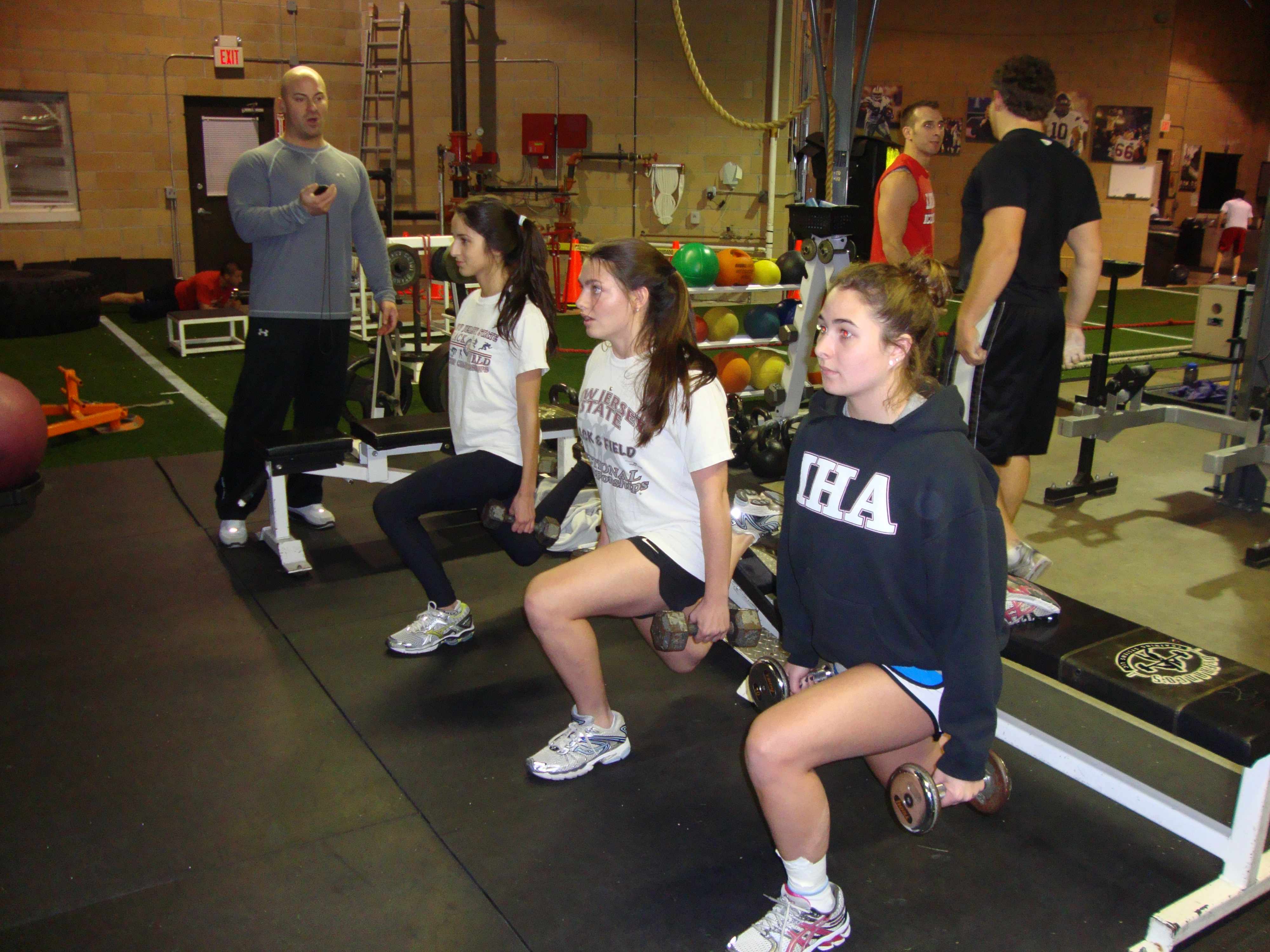
I’ve recently been getting more and more questions regarding how we assess our “average” clients during their first session(s) with us. (By “average” client I’m referring to the 95% of athletes that walk through our doors, NOT the 5% of professional athletes or clients with “special needs”. I’m basically referring to the “healthy” grade school, high school and college athlete that comes to us looking to get stronger, faster and better-conditioned for their particular sport.)
I discuss my personal “assessment process” in my Lost Secrets of Strength: The Business Files DVD/CD, so I don’t want to give away too much out of respect to the people who invested in that great product. But, I’ve been very open with the fact that I feel most “functional assessments” and “testing days” at training facilities are not necessary and WAY over-rated for 95% of the athletes that most trainers/coaches deal with.
A facility that I used to work at charged almost triple the money for their “functional assessment session”, compared to a regular training session. The “functional assessment” was mandatory because they claimed it helped them design a more “specific” program for the athlete. BULLSHIT! (Ooops, did I just say that?!) In my opinion, the “assessment” session was basically criminal because once it was completed the athlete just got thrown into a regular group with all the other athletes anyway! Plus, everything that the “assessment” revealed could have easily been noted by any trainer worth his/her weight just by watching the athlete warm up during a “regular” training session.
Here’s how I do it at my facility with most of my clients…
All athletes start TRAINING their very first day with us. We don’t waste anyone’s time or money! Every training session is valuable and brings an athlete one step closer to achieving their goals, so we get right to the point! BUT, during this first session, we use the warm-up and the exercises within the workout as our “assessment“. Something can be learned about an athlete from literally every single one of our warm-up exercises!
Now, I’m not going to give away all of our secrets; but I do want to share three extremely simple things to look at when you first start working with a new client. These three “assessments” will provide a “jump-start” on getting to understand your new client’s body and his/her imbalances, limitations, etc. These simple things will help shape the initial program that you design. Then, as you continue to work with the athlete, you will learn new things each and every day. A good trainer/coach will constantly “assess” with each session and make changes/corrections as needed throughout the training process.
This is truly your “Assessment for Dummies”…
Assessment #1 – Walking into your gym!
Any good trainer/coach should be “assessing” an athlete right from the very second they walk through the door. I always glance at an athletes feet first — are they straight, turned out, or are they “pigeon-toed”? Do they stand with one foot slightly in front of the other? This info will give you a “preview” of what’s about to come once the athlete starts warming up. So I just make a ‘mental note’ as I’m talking to them.
As far as their upper body goes, you obviously want to take note of their posture. But, you should take it a step further and take note of their shoulder height. Most athletes will have one shoulder higher than the other. Here are some things to note when you see this…
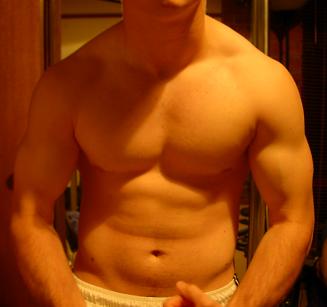
- The shoulder of the athlete’s dominant hand will usually sit lower. (For example: If an athlete is right-handed, you’ll usually notice that his right shoulder is lower than the left, as pictured above.) This is where you need to make the athlete aware of what they’re doing outside of the gym as well! Tell them to carry their purse or bookbag on their non-dominant side from now on, etc. Remember that there’s no way to completely balance someone out in the weight room if they continue to contribute to the problem by performing tens of thousands of “reps” in their everyday life activities!
- A very tight hip flexor on one side can cause that shoulder to sit lower than the other. (Basically, the tight muscles on that side “pull” everything down. This is extremely common and oftentimes it’s the reasoning behind chiropractors telling athletes that they have “one leg shorter than the other”.)
- Obviously, the positioning of the shoulders will affect scapular position (or vice-versa); scapular function is an extremely important aspect of an athlete’s health/performance that must always be addressed, so pay attention to this!
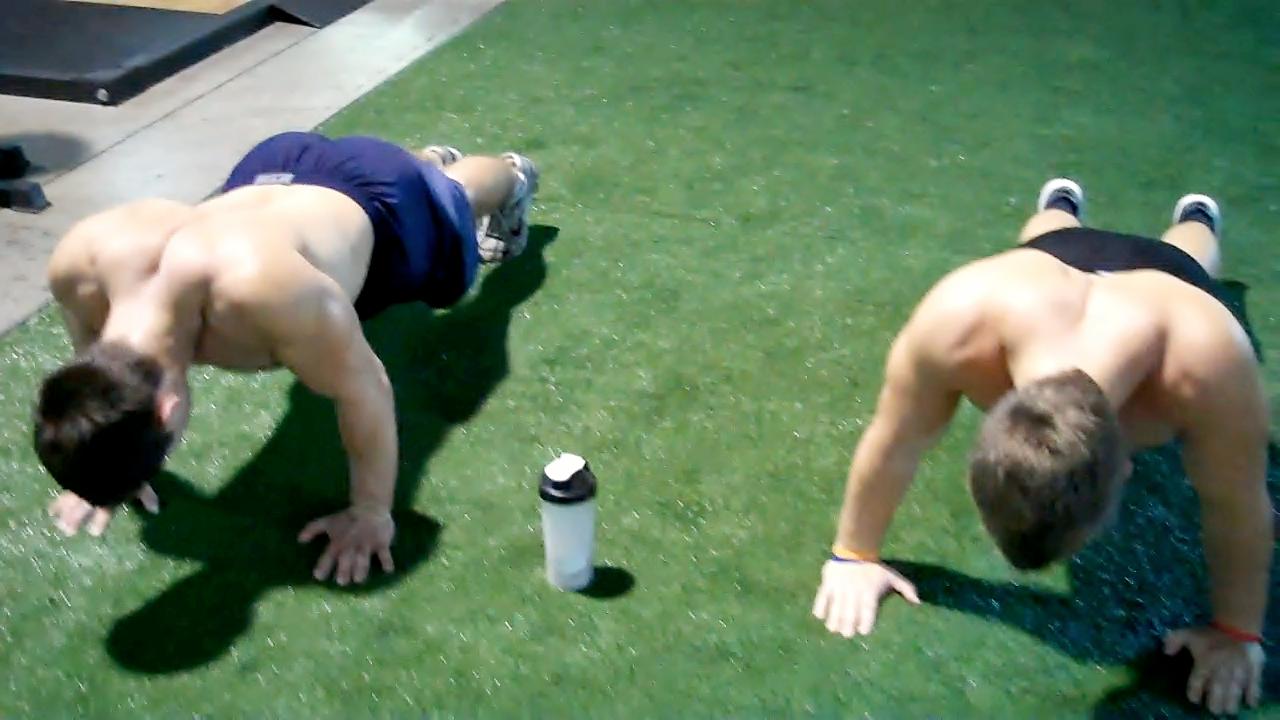
- You must also be aware that “uneven” shoulders affect spinal alignment and can even be a sign of scoliosis. (This is why it’s extremely important for every trainer/strength coach to have a network of other specialists/doctors that they can refer their athletes to if the problem is out of their control.)
Assessment #2 – Bodyweight Prisoner Squats
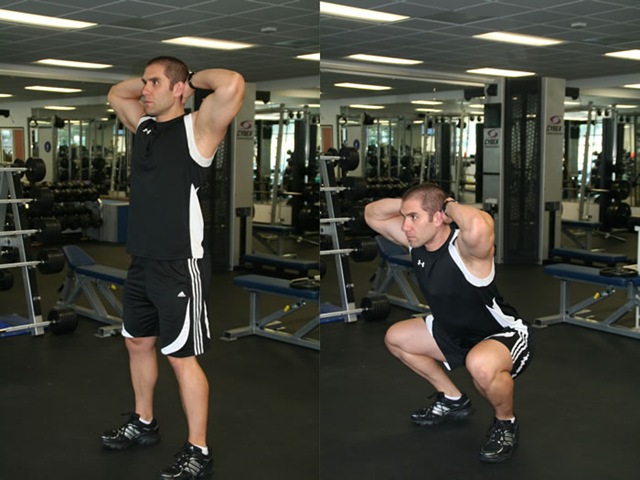
It is amazing how much you can learn about an athlete just by watching them perform a bodyweight squat! This is one of the main reasons I start my warm-up with this old-school exercise. Here’s a basic checklist regarding what to look for and why certain things may be happening…
- If the feet rotate “outward” as the athlete squats down, it’s a good sign that their hip rotators are tight.
- If the athlete’s heels raise off the ground as they lower themselves, it’s usually because of tight hip flexors and/or tight soleus/achilles tendon.
- If the knees “collapse” inward while squatting, it’s usally a sign of tight adductors and/or weak hip rotators. (This is very common in females, due to the “Q-angle” of their hips.)
- If the athlete can’t hold their low-back arch, it’s usually a sign of tight hip flexors and/or a weak “core” (abs/spinal erectors).
- If their upper back “rounds” and they can’t keep their head/chest up, it’s usually a sign of weak upper back/external rotators and/or tight pecs (major and minor).
Assessment #3 – Sprinting
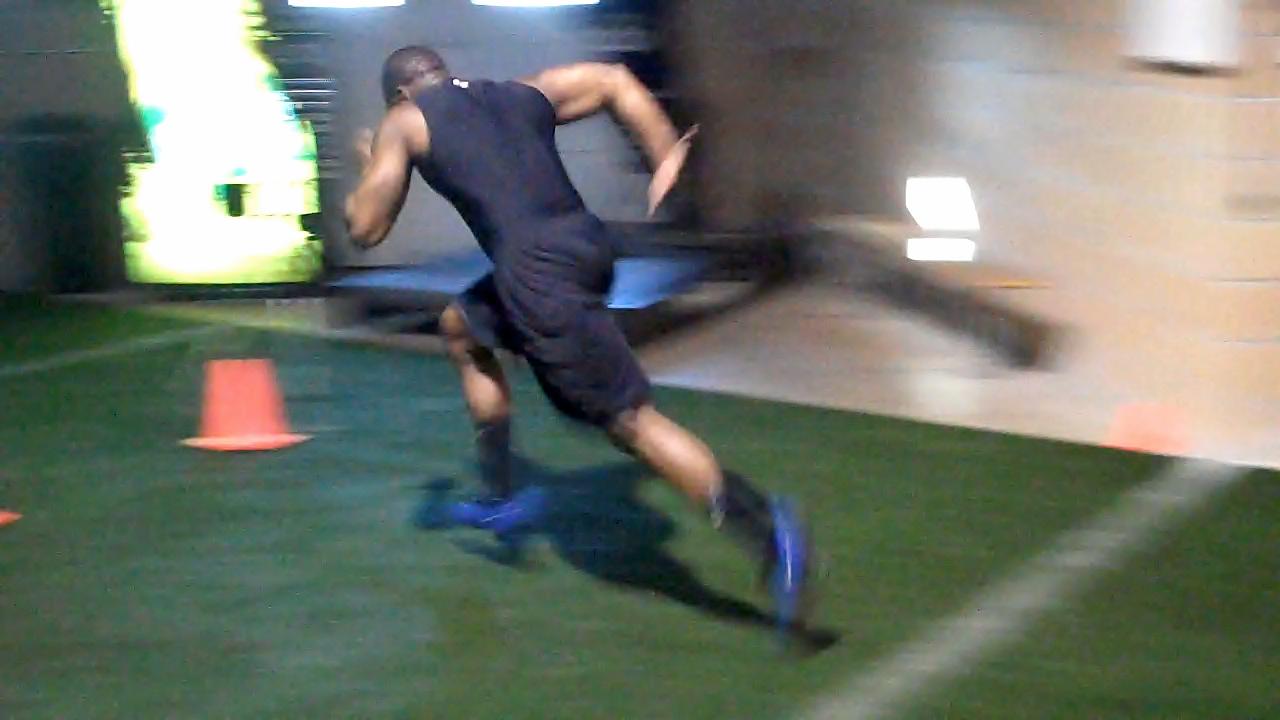
At the conclussion of the warm-up, I will always have the athlete perform a few sprints. They don’t have to sprint long distances in order to assess them — 10-20 yards is usually fine. I love watching an athlete sprint because it is a true “functional assessment” of their body! Nothing will “expose” an athletes strengths, weaknesses and imbalances like sprinting!
Watching an athlete sprint will confirm your findings from their squat assessment…basically, all of the weaknesses and tightnesses from squatting will be accentuated when the athlete moves at high speeds. But, here are some basic “sprint-specific” things to look for as well…
- If the athlete takes short, choppy steps (instead of fully extending like in the pic above), this is usually a sign of tight hip flexors and/or weak/tight hamstrings/glutes.
- If the athlete’s body and arms rotate “side-to-side” and their arms cross the midline of their body (instead of firing straight back), this is usually a sign of weak core musculature, especially the rotational muscles of the spine.
- If the athlete’s arm action is “short” and looks more like someone “playing the drums”, they need to lengthen their internal rotators and strengthen their external rotators/upper back (so they’re able to fire their arms BACKWARD, behind the hip.)
- If the athlete can’t drive their knees up/flex their hips at least 60-degrees, their hip flexors are usually tight and/or weak…or they are just too FAT!
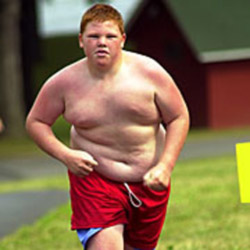
NOTE: I seriously can’t believe I actually have to address this, but I do because I used to witness it every friggin’ day…
It is completely pointless when “speed schools” teach sprint mechanics to fat kids! Save your time/energy and educate their parents on proper nutrition and get the kid to start performing general movement skills/calisthenics – don’t worry about sprint “technique” just yet because they are physically unable to get into the proper positions anyway! You will be amazed at how much better the kids “sprint mechanics” get just by eating better and performing some basic exercises/calisthenics! It’s amazing what dropping some bodyfat and gaining some muscle will do to your sprint mechanics!
CONCLUSION
After reading my “Assessment for Dummies”, you now hopefully realize how my “basic” strength program/template evolved. After assessing thousands of athletes, I started to see the “trends” over and over again — tight hip flexors, adductors and pecs; weak upper backs/external rotators and hamstrings; one leg being “shorter/tighter” than the other, etc., etc. THIS is why I address the common “issues” within my program. Why separate your ” performance training” and your “corrective exercise/pre-hab” workouts when you can adhere to the TRAINING ECONOMY and prescribe exercises/programs that give your athletes the best ‘bang for their buck’ in all areas of health/performance!
The data I’ve collected from all my “assessments” is why you see me prescribing such things as: box squats with a ‘wider-than-normal’ stance to stretch the adductors, while simultaneously strengthening the hip rotators/hamstrings; I almost always double the volume for the “postural” muscles (upper back/external rotators), compared to the “performance” muscles (pecs/tris); it’s also why you’ll constantly see exercises that dynamically stretch the pecs, while simultaneously strengthening the upper back musculature (scarecrows, band pull-aparts, etc.). You’ll also notice I love all variations of split squats and reverse lunges due to the fact that they strengthen AND lengthen the lower extremities simultaneously. I can go on and on about the “staples” in my program, but here’s the bottom line:
A properly designed PROGRAM is the best remedy for an ‘unbalanced’ athlete!
Just last week, two of my clients from the WWE told me that their physical therapist (who they haven’t seen since I started working with them 3 months ago) commented on how much more “balanced” and “symmetrical” they looked! Both of these people have suffered numerous (serious) injuries and have had multiple surgeries. Having such a well-respected physical therapist call them “balanced & symmetrical” is the best compliment I could have ever gotten! This means a lot to me due to the fact that I am not a physical therapist or “corrective exercise guy”. I’m just a guy who prides myself on designing well-thought-out programs, while listening to my athlete’s feedback. I never instill “fear” in anyone I train by telling them “they’re prone to injury” or any other negative comments. I observe, listen, design and “constantly alter” my programs, depending on the athlete’s progress and feedback. This is our JOB as “performance coaches”!!!
I will say it one more time: When your program is balanced, you will build strong, healthy athletes…guaranteed!
Drop me a comment below and lemme know your thoughts on this post!
-Joe D.
P.S. To learn more about developing “balance” with your athletes, check out www.AmpedWarmup.com!
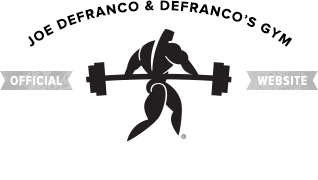




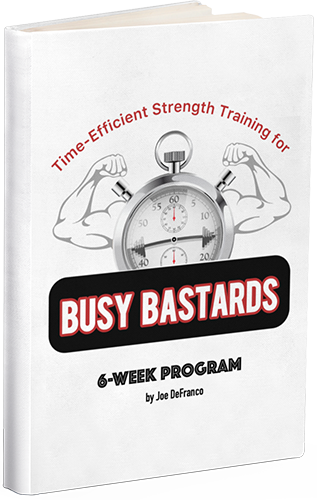
Hey what if someone has sway back what would u have them doing as far as strengthening excersizes